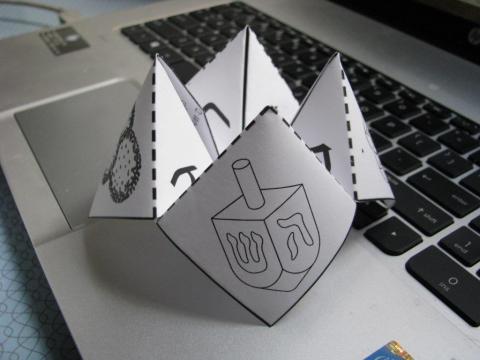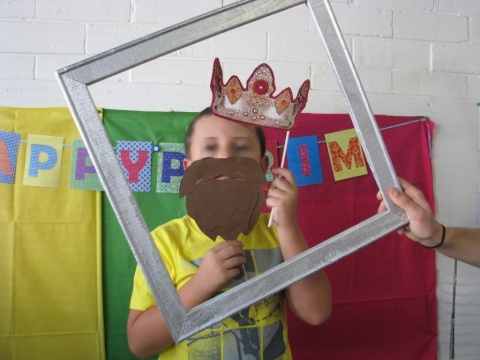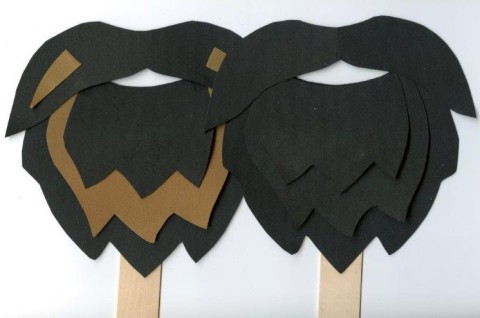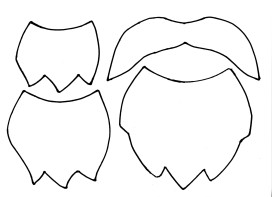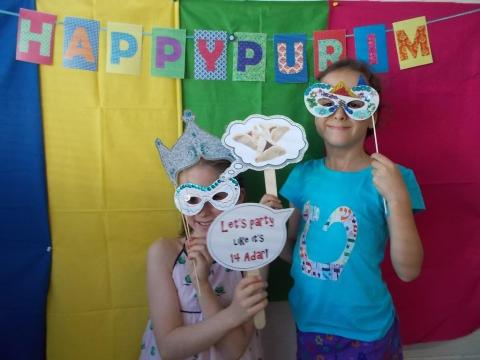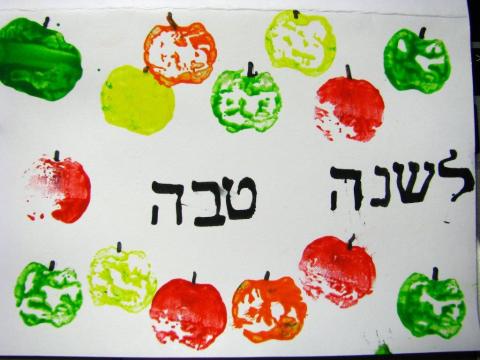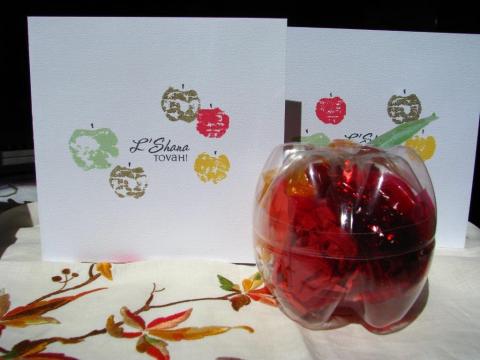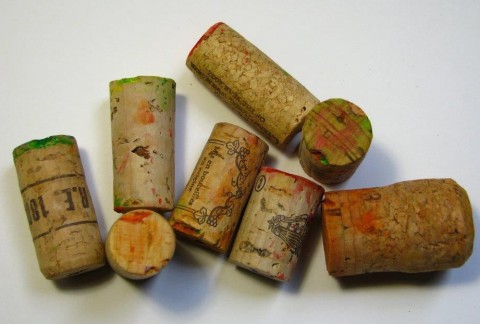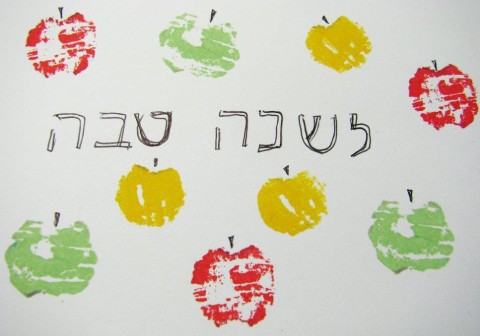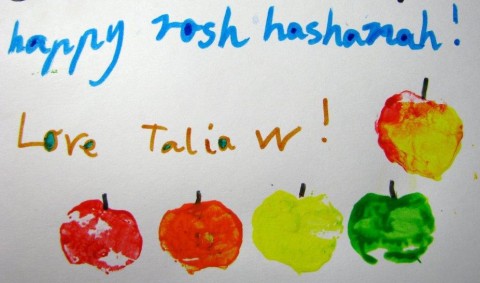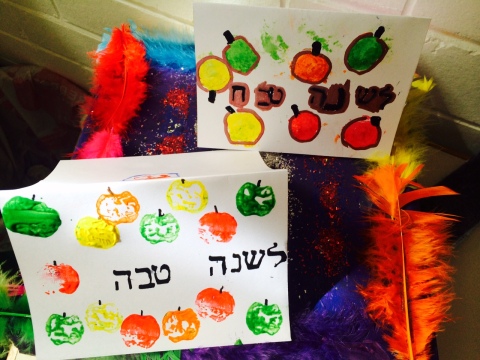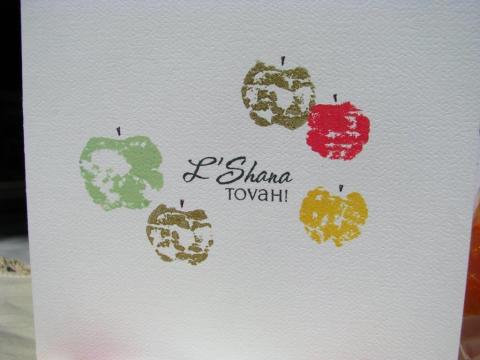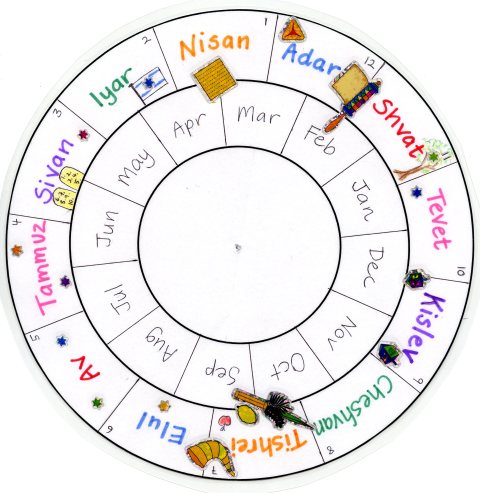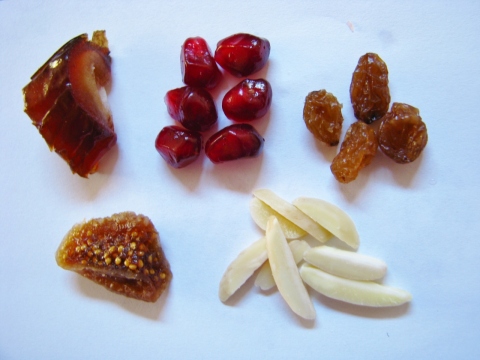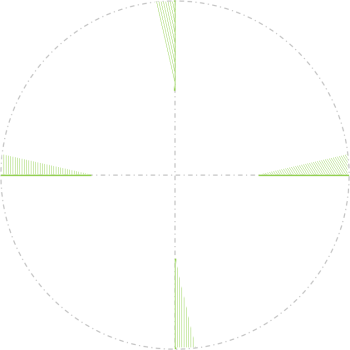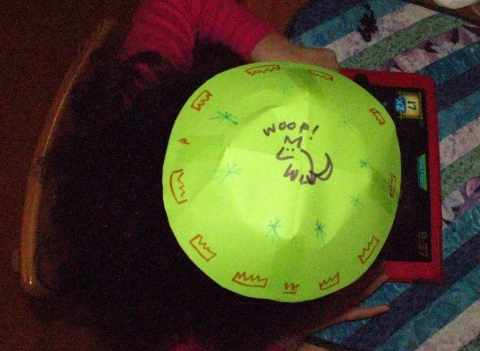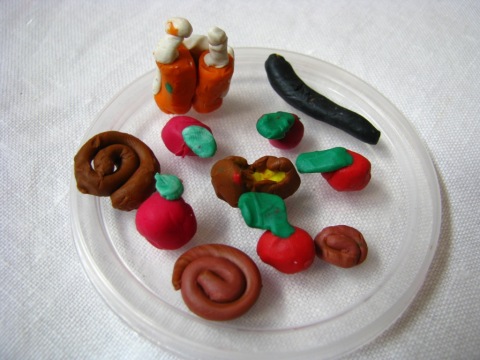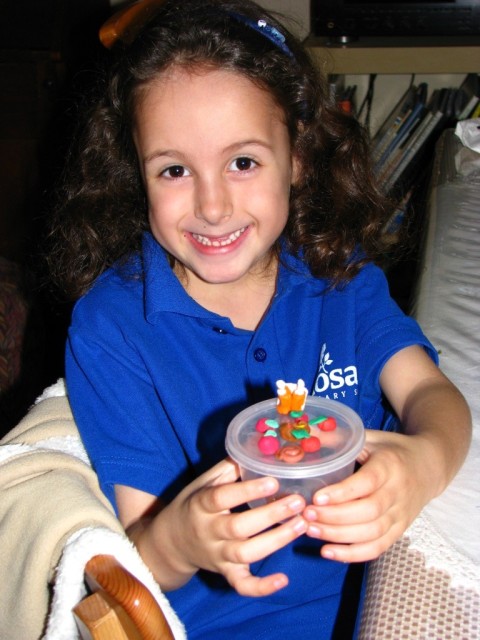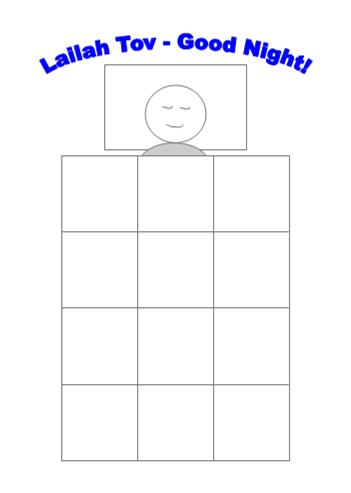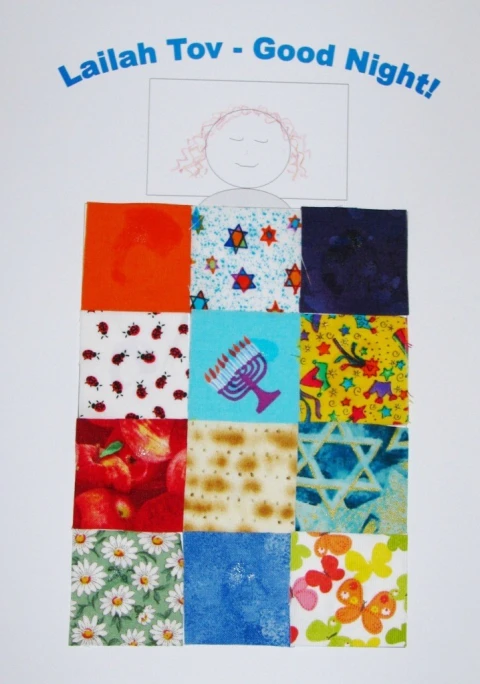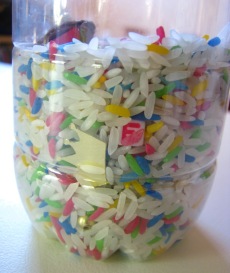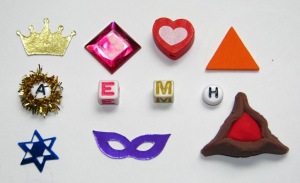Archive for the ‘Craft for kids’ Category
- In: Craft for kids | Festivals | Hebrew | Uncategorized
- 4 Comments
I remember making and playing with paper fortune tellers (also known as chatterboxes or cootie catchers) when I was a child. Earlier this year my daughter brought one home from primary school, proof that while much has changed since my childhood, much also remains the same. I was struck by the possibility of combining the eight internal faces of the chatterbox to the eight nights of Chanukah, an idea which I’m sure has many more possibilities than the simple one I have settled on for class this weekend.
I found a template online (google “chatterbox template” and you’ll see many) and filled it in. Depending on the age and ability of your children, and the amount of time you have available, they could fill it all in themselves, but this guarantees a minimum standard of completion and legibility!
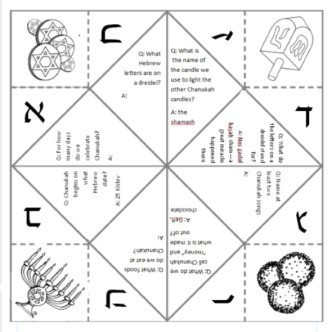 Black and white diagrams can be coloured in, children can practice the first eight letters of the alef-bet instead of counting to eight, and underneath each letter is a question relating to the festival. I left half unanswered so they can do a bit of work themselves before taking their new toy home and quizzing their parents.
Black and white diagrams can be coloured in, children can practice the first eight letters of the alef-bet instead of counting to eight, and underneath each letter is a question relating to the festival. I left half unanswered so they can do a bit of work themselves before taking their new toy home and quizzing their parents.
Instructions on how to fold a chatterbox can be found online – thank you again google.
You can download a printable pdf of my Chanukah chatterbox here. Or be brave, go make up one yourself!
Chag sameach!
Beards are curiously fashionable at the moment, and now you can make your very own!
When looking for Purim photo booth props, I found a quite reasonable beard outline. However it was adult-sized and entirely flat. So I adapted it to make it a little smaller, and then added some layers. I cut the beard out of lightweight card and attached it to a large popstick. Unfortunately, black layers on a black background did not provide a great deal of contrast, so I experimented using layers of different colours.
I decided that it wasn’t so much the colours that mattered as the depth of the layers. I had joined the three beard layers together using double sided tape near the top of the beard. This left plenty of room to insert a piece of craft foam between the layers so that the lower part protruded outwards, making a much more visually interesting (I can hardly say realistic!) beard. The picture above shows the beards with the foam between layers, but you might just have to take my word for it. The moustache overlaps the beard leaving a small mouth space. The overall impression is possibly less biblical hero and more Lorax, but it’s the thought that counts, right?
After I’d made my beard props, I thought it would be a fun activity for the kids too. Here is my beard template with all four pieces on one page. If you pre-cut the four shapes in cardboard, kids can just trace around them. I found it helps for them to see how to lay out the page so as to fit all four pieces and not waste card. The kids were happy to staple their beard pieces together in the absence of double sided tape at the activity day.
Enjoy finding new characters to portray with your new beard!
Printable Purim banner
Posted on: 28 February, 2015
After I constructed my paper Purim banner, I scanned the letters so I could print them out again without having to worry about any cutting and sticking. You can find the individual letters saved as .jpg files on the original post.
I saved all the letters at their original size into a PDF file – but the file was huge! I compressed the file, but this reduced the print quality. It is probably OK if you want something large (to be seen across the room) but are not too worried about how it looks up close. Purim banner – A4 size.compressed.
Next I saved them into a PDF file with each letter half as big: Purim banner – A5 size This file has a better resolution and should print fine.
I also ended up, somewhat by accident, with a PDF file which gives two copies of each letter, but with four letters per page. These are the perfect size for a couple of small banners for home or classroom – download it here: Purim banner – mini size
Print, cut out the rectangles, and sticky tape a piece of ribbon across the back. Try and leave slightly more space between the words than I managed on my first effort!
Happy Purim!
Looking for a fun and easy Rosh Hashanah card craft? This is a variation on an activity I saw on the Challah Crumbs website. Basically it involves printing apples using the usefully circular nature of the end of a cork. This may be easier said than done if you don’t drink wine – or even if you do, given how much less common wine bottles with corks are these days. It might be time to pop that bottle of champagne you’ve been saving for the right occasion. 🙂
Fortunately for me, I saved a bunch of corks some years ago with the plan of making an entire pinboard out of recycled corks. The pinboard never eventuated, but the corks were still hanging around. (Yes, I am that sort of person who finds it hard to throw things away, how did you guess?)
Rather than keeping the corks completely round, I used a cutting blade to take out two small chunks to mimic the dimples at the top and base of an apple. The stems are just added in pen afterwards.
Corks are not uniformly flat, especially once you’ve impaled them with a corkscrew, but this adds to their charm in my opinion. I initially tested my cork stamps with ink pads, and I really liked the result. The handwritten Hebrew letters are less of a feature, but I was making this in a rush as a demonstration model for a class of children who were not going to be critical (thankfully!) I gave them some Hebrew alef-bet stencils and they enjoyed finding the right letters for their own cards.
We don’t have colourful inkpads at cheder, so there we used paint. It worked fine, but if you are doing this activity with kids then I recommend you have a scrap sheet of paper or cardboard where kids can stamp first to lose some excess paint prior to stamping their Rosh Hashanah card. This is because if you have too much paint on the end of your cork, you end up with a blob which looks less like an apple and more like somebody stepped on a paint bug and squished it to the page.
The advantage of paint is that you can end up with mixed colours which look fabulous, as my daughter demonstrates above.
Rosh Hashanah is in less than two weeks, so I foresee more cork stamping at home this weekend!
Update: I made cards for family on the other side of the country using ink, with a stamped greeting in the middle. I was pretty happy with how they turned out. It’s not so obvious from this photo, but the metallic gold apples looked great.
Jewish months calendar
Posted on: 29 June, 2014
I wanted a simple calendar for my classroom which would show the entire Jewish year at a glance. So I made this:
It is a laminated circle showing the Hebrew months set against the Gregorian calendar months. I used a split pin (brad) to attach it to a backing piece of cardboard, so that you can rotate it as the year goes past. (It actually was Adar when I made it!) I put a second circle in the middle which does not need to rotate, and my original plan was that this would cover the brad. Unfortunately I couldn’t find a brad which was large and flat enough that the circle would stick to it – so I had to put the brad through both circles.
Admittedly it is only approximate, and does not take into account leap years (when the Jewish calendar gains an entire extra month), but it does show the whole cycle of the year at once which was my main requirement. I added stickers or drew pictures to indicate the main festivals. I think this would be a great project for kids who are learning the names of the months of the Jewish calendar.
I made it by drawing concentric circles on the computer and then using a quilting ruler as a protractor to add the “spokes” after I had printed it. You are welcome to use my template for the circles and add your own spokes and text.
I decided when I made it to write the months going anti-clockwise around the circle, but I notice now that every other circular, perpetual Hebrew calendar I can see on Google goes clockwise, so my classroom calendar might be unique in more ways than one! However as long as the months are in the right order, I guess it doesn’t really matter too much.
Seven species biscuits
Posted on: 26 June, 2014
- In: Craft for kids | Festivals | Recipes
- 1 Comment
Last Tu Bishvat, I organised a snack activity to tie in with the theme of the Seven Species, “shivat haMinim”. These are the grains and fruits listed in the Torah as being special products of Eretz Yisrael, the land of Israel: “a land of wheat and barley, and vines and fig-trees and pomegranates; a land of olive-trees and (date) honey”.

It’s not so easy to combine all these species into one child-friendly snack, so I cheated slightly by replacing olives with almonds (as almond trees blossom in Israel around the time of Tu Bishvat) and gluing the lot together with chocolate icing. It was delicious!! (We also offered the kids bread with olive oil for dipping, so no species was missed out.)
All you need is a packet of Malt biscuits (which contain both wheat and barley)

and some chopped up fruit (specifically: dates, dried figs, pomegranate seeds and sultanas) and slivered almonds
and a quantity of home-made chocolate icing (or something similar) to hold the fruit and nuts in place.
Spread the biscuit with chocolate icing, load up with date, fig, pomegranate, sultanas and almonds – some of the kids even made little pictures out of their toppings – and eat! This was so quick and easy to organise, and so popular, I can guarantee we’ll be doing it again.
Paper kippah (yarmulke) craft
Posted on: 21 June, 2014
I was teaching the Hebrew letter kaf (כּ) to some 6-7 year olds, and wanted a quick craft activity to go with it. What starts with kaf? Well all sorts of things actually, but one of them is kippah. So we made paper kippot.
You will need:
– paper – normal photocopy weight paper is fine
– a small plate to trace around, or a compass
– scissors
– sticky tape
– decorating materials (markers, stickers etc)
First, draw a circle on a piece of paper. I used an 18cm (7″) paper plate, which makes quite a large kippah. If your child wants to wear the finished product, you might need to make it a little smaller.
Next, decorate the inside of your circle. You might like to draw other things which start with kaf, such as keter (crown), kochavim (stars) and kelev (dog) as well as the letter kaf itself. My daughter decided to draw a dragon wearing a keter (crown – starts with letter kaf) while flying over a derech (pathway – ends with letter kaf) through a bamboo forest.
Now cut out the circle, and carefully fold it in half, then into quarters. Unfold it again. You will need to cut halfway along each of the four lines you have just made in the paper. (See where the green lines are on the image below).
Once you have made your cuts, gently overlap the two edges of each cut (as per the green shaded area above, adjusting it to the shape you want) and secure it with sticky tape.
And that’s all there is to it! Just add a hairclip and wear your new kippah with pride! 🙂
My daughter, now aged 6, is really enjoying creating little items out of plasticine. This is her recent Rosh Hashanah still life, comprising apples, a pot of honey, three round challot, a black shofar and and orange and white Torah.
She had so much fun, she then produced a hamantaschen, a very wonky sukkah with table and chair and a lulav and etrog, among other things! I was very proud of her efforts and finished products, which were 100% her own work. My only input was encouragement and supply of the storage container.
Plasticine is really easy for little fingers to work with, comes in a range of colours and stays soft indefinitely. It’s great!
Lailah Tov craft
Posted on: 9 June, 2013
- In: Craft for kids | Hebrew
- 5 Comments
We’re between festivals this month, so I decided to focus on some Hebrew words and phrases with the kids in my Shabbat Tot class. “Lailah tov” means “Good night”. For a craft activity, we’re making a collage quilt using squares of fabric. You could also do this activity with squares of paper if you didn’t have any spare fabric.
As a bonus, my fabric represents a number of Jewish festivals, either intentionally or via a process of creative reimagining!
This is the (very simple) backing picture prior to the fabric squares being glued on.
And this is what it looks like with the completed quilt.
Can you spot: matzah for Passover, apples for Rosh Hashanah, a candle holder for Hanukah? How about: party hats for Purim, flowers for Shavuot, a plague of insects and another of darkness for Passover, water that parted at the Red Sea, and a selection of stars of David? If you can suggest what my plain square of orange (ignoring the glue stain) might represent, please leave me a comment!
Purim is just around the corner, and I wanted a gragger project with a difference. May I present (drumroll please!) the “I Spy” gragger!
This craft activity combines two great ideas – 1. something to make noise when Haman’s name is mentioned during the reading of Megillat Esther at Purim, and 2. the I Spy bag (or in this case bottle). If you’ve never seen an I Spy bag, they are great: a collection of random (or not so random) small interesting objects hiding in a sea of small pellets, awaiting your discovery. I bought one for my daughter when she was younger, and I think I enjoyed finding the items in it even more than she did!
The gragger part is easy – an empty plastic bottle containing some rice. You could also use uncooked pasta, dried lentils etc, but rice is relatively quiet when shaken, plus you can easily dye it lovely colours by putting rice, a squirt of food colouring and a teaspoon of white vinegar into a ziplock bag and shaking/rubbing until the rice is evenly coloured. My daughter enjoyed helping with that! I used a cup of rice per 600ml bottle but go with what looks good to you.
Deciding what items to include for the “I Spy” component can be fun too. I thought of a few myself, then called on the lovely Joanna B from Bible Belt Balabusta for some more inspiration. Here’s our combined list of potential items for inclusion:
– Alphabet beads for the inital letters of the names of the main characters. (I threaded a piece of gold pipecleaner through the A for King Ahashverosh.)
– a plastic jewel for Queen Ester
– a gold coin, or a gold or silver crown (to be cut out of shiny cardboard or trimmed from a piece of foil lasagne pan) for King Ahashverosh
– a heart to represent the good Mordechai
– a triangle for Haman’s hat
– mini Hamantaschen made from modelling clay
– a tiny horse, to represent the one that Haman had to lead Mordechai around on
– Ahashverosh’s sceptre, which he extends to Esther when she visits uninvited, maybe made from a shortened, painted toothpick with a bead glued on the end
– food for the banquet
– a tiny book or scroll that King Ahashverosh checks when he can’t sleep, finds Mordecai’s deed within.
– dice: to represent the “lots” (“Purim”) that Haman threw to select the date to destroy the Jews
– mini masks (cut from cardboard or perhaps found as confetti)
– magen david confetti
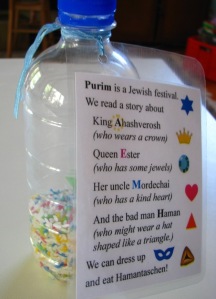 I used the items I could get hold of (or make) most easily, but it would have been fun to use all these ideas. (Thank you Joanna!) The children I was making the graggers with are quite young – 2-3 years old, so I made a list of the items and laminated it so it could be tied to the neck of the bottle as a reminder of who is in the story and what could be found if you looked.
I used the items I could get hold of (or make) most easily, but it would have been fun to use all these ideas. (Thank you Joanna!) The children I was making the graggers with are quite young – 2-3 years old, so I made a list of the items and laminated it so it could be tied to the neck of the bottle as a reminder of who is in the story and what could be found if you looked.
The kids loved putting things into the bottle and shaking it all up. We then had a great rendition of my Purim story for young children (ie the G-rated version) with accompanying Purim spoon puppets, and tested out some new hamantaschen recipes. And now we’re all set for Purim!

